Whether you’re a brand-new coach or a seasoned one, you’ve probably heard people say social media is one of the best ways to get coaching clients.
But if you’re fed up with spending all day on social media, what can you do?
While social media is a useful tool, it can get overwhelming quickly. Luckily, there are other ways to build an audience and meet potential coaching clients.
Here’s what you’ll learn in this post:
- Can you get coaching clients without social media?
- What you need in place to get clients without social media
- 9 marketing strategies to land clients without social media
Is it Possible to Get Coaching Clients Without Social Media?

Short answer? Yes!
Social media marketing works well for coaches. But it does have several flaws.
For one, you don’t own your social media followers. If Instagram goes down tomorrow, or if TikTok decides to ban your account, you lose everything overnight.
Social media also opens you up to trolls and haters, which can be detrimental to your mental health.
Yet, coaching has been around for way longer than social media! And coaches have been getting clients without social media for ages.
So if social media isn’t your jam, don’t sweat it.
Pro tip: No matter where you’re promoting your coaching business, Paperbell makes it easier to sell and run everything from one seamless platform. Claim your free account and launch a beautiful coaching website in minutes.
What You Need in Place to Get Clients Without Social Media
Whether you want to leverage social media or not, there are a few elements you should have in place before you start marketing:
- Get clear on what coaching packages people can purchase from you (this should be clear for your potential clients, too)
- Make sure your coaching packages clearly communicate the transformation you’ll help your clients achieve (if that’s not clear, potential clients may not see the benefit of hiring you)
- Have a few coaching automations in place to make it simple for potential clients to book you
That’s exactly why we created Paperbell.
With Paperbell, you can create a beautiful coaching website that not only hosts all of your coaching offers in one place, but also automates the entire back-end of your business.
That means no more:
- Chasing after clients for unpaid invoices
- Sending manual appointment reminders
- Keeping track of how many appointments remain in a client’s package
- Remembering to send digital downloads and other resources at the right time for each client
Inside Paperbell, everything is run from your coaching packages. You can choose from existing templates to get started faster, or pick a pricing model and customize from there.
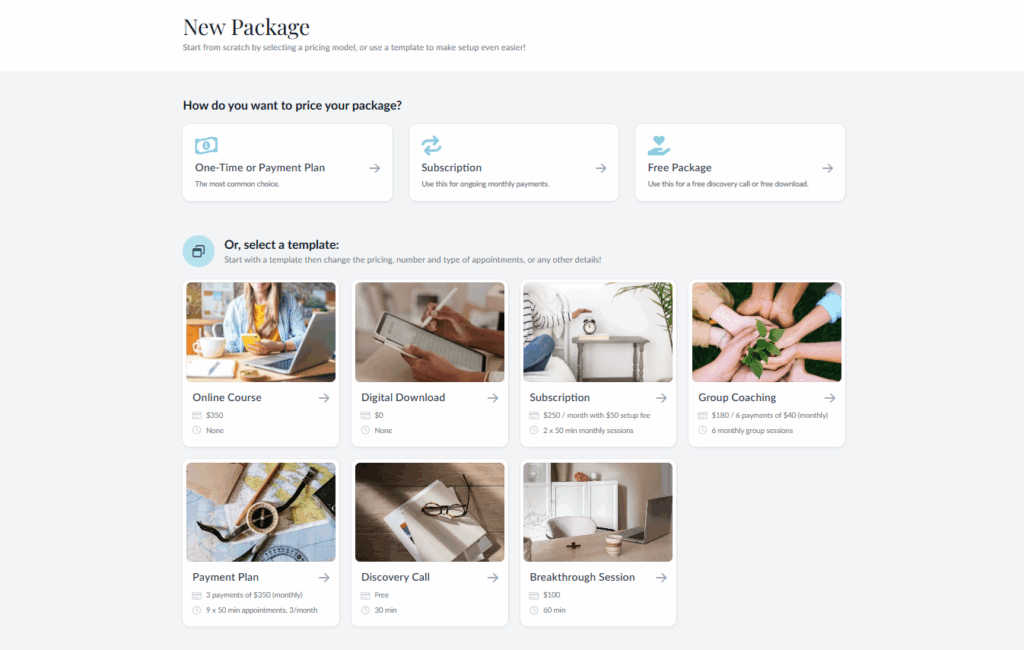
To each package, you can add:
- Dripped out content delivery (or content that’s available to clients upon purchase)
- Automated emails for every step of the coaching process
- Surveys and intake forms
- Custom availabilities that differ from your global availability
- Group coaching sessions
- Individual coaching sessions of varying length (any combination you’d like)
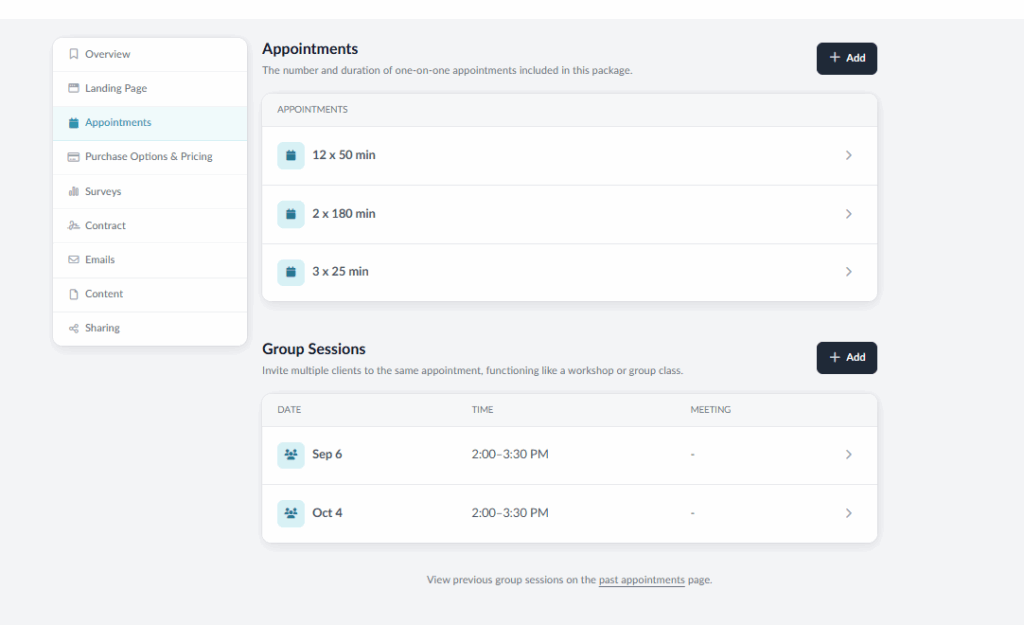
Once you have at least one coaching package, Paperbell will automatically generate your coaching website and display it. From there, you can:
- Customize branding elements (description, images, logos, colors, etc.)
- Import testimonials from previous happy and satisfied clients
- Add elements such as Frequently Asked Questions, opt-in forms, and links to your social media profiles
Think of Paperbell landing pages as your online coaching business cards, where your prospects can learn everything they need to know about every package you offer.
Once your Paperbell platform is set up (which can take only a few minutes), your clients can:
- Land on your coaching website
- Choose a package that interests them
- Read testimonials from existing clients
- Proceed to checkout
- Pay you in full
- Book their first session on your calendar
- Receive automated email notifications and confirmations so they don’t miss their appointments
- Receive intake forms automatically so they can prepare for their first session
- Access contracts, digital resources, and more either immediately or upon a schedule you set up
Alternatively, they can follow a similar process for your free discovery session. And they can do all of that without you having to lift a finger!
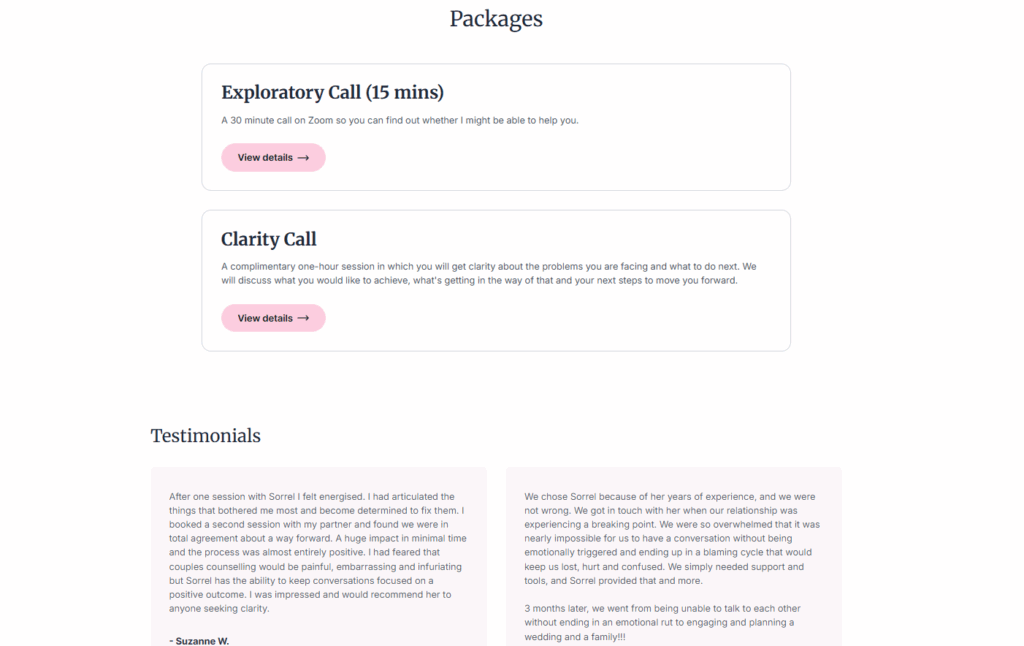
Without these processes in place, you can still get coaching clients. However, you’ll have to manage the back-and-forth conversations via email. And you’ll also need to create an invoice manually, send a separate payment link, make sure your client remembers to show up to their appointment, and so much more.
All of these manual tasks will take time away from your schedule and potentially create chaos in your booking process, which can be harmful for client retention.
But when you free yourself from these tasks, you can wow your clients and spend more time on revenue-generating work instead, like all the marketing strategies we cover below.
Click here to try Paperbell for free and get your coaching site set up before you begin your no-social-media marketing campaigns.
9 Marketing Strategies to Land Coaching Clients Without Social Media
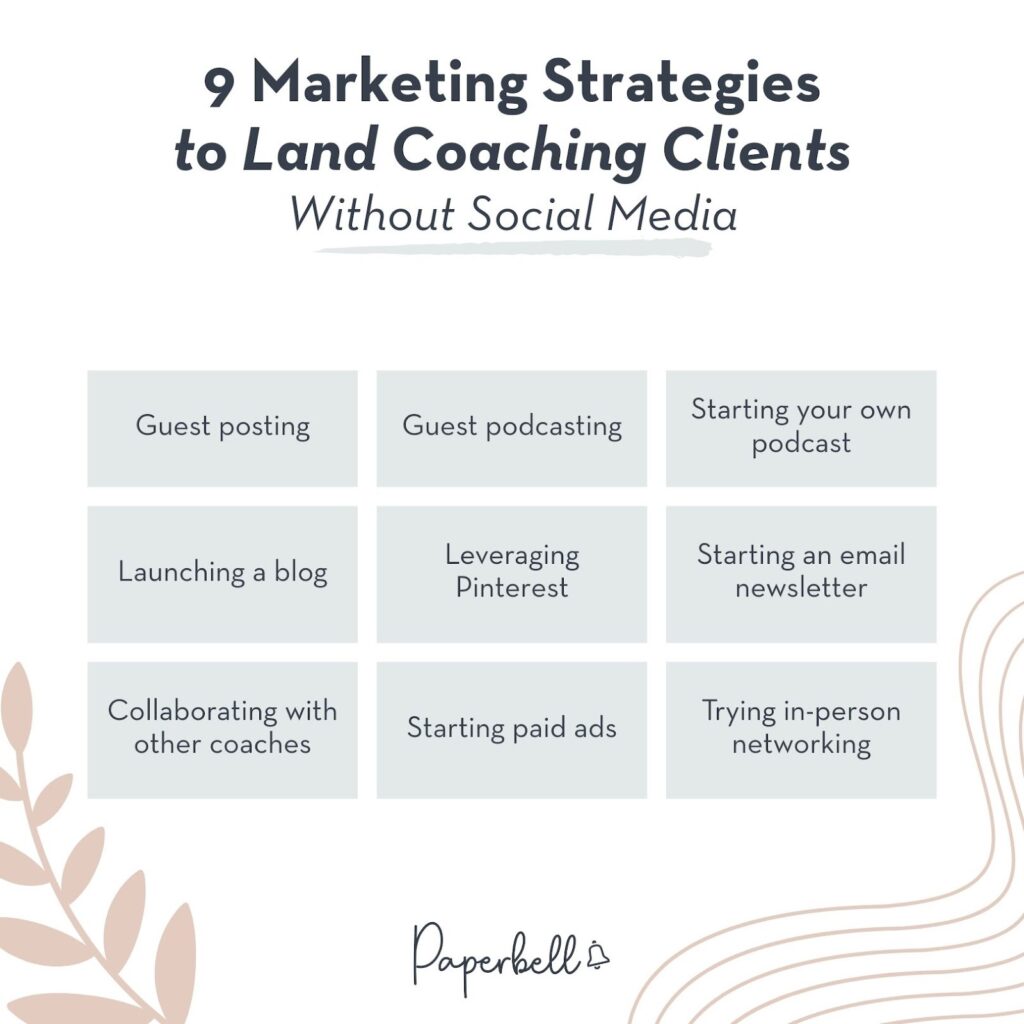
Here are nine ways to get coaching clients without social media. Almost all of these don’t require any investment to get started, which makes them ideal for brand-new coaches.
1. Guest posting
Some of your ideal clients are out there reading other people’s blogs. And posting an article as a guest can be a great way to get seen by those potential clients.
You can find guest posting opportunities by searching for the name of your niche + “guest posting” or the name of a blog + “guest posting.” Here’s an example:

When you submit a guest post, remember to follow the blog owner’s guidelines for the letter. Some bloggers will want to see a full post, whereas others will only want to see suggested topics.
2. Guest podcasting
584.1 million people across the world listen to podcasts. At least a few of them are bound to be your ideal clients.
As such, appearing on other people’s podcasts can be a highly effective, no-spend way to get coaching clients.
Just like guest blogging, guest podcasting allows you to take advantage of someone else’s audience to share your message.
But because your audience gets to hear your voice next to a well-respected host, guest podcasting can lend you even more credibility than guest posting.
3. Starting your own podcast
In addition to appearing as a guest on other people’s podcasts, you can start your own podcast.
You don’t need high production value to start a coaching podcast. For example, marketing coach Luke Charlton started by publishing a short episode of The 15 Minute Client Podcast almost every day — and sometimes records straight from his phone. Nowadays, he posts less frequently because he’s already gotten the traction he needs to remain fully booked.
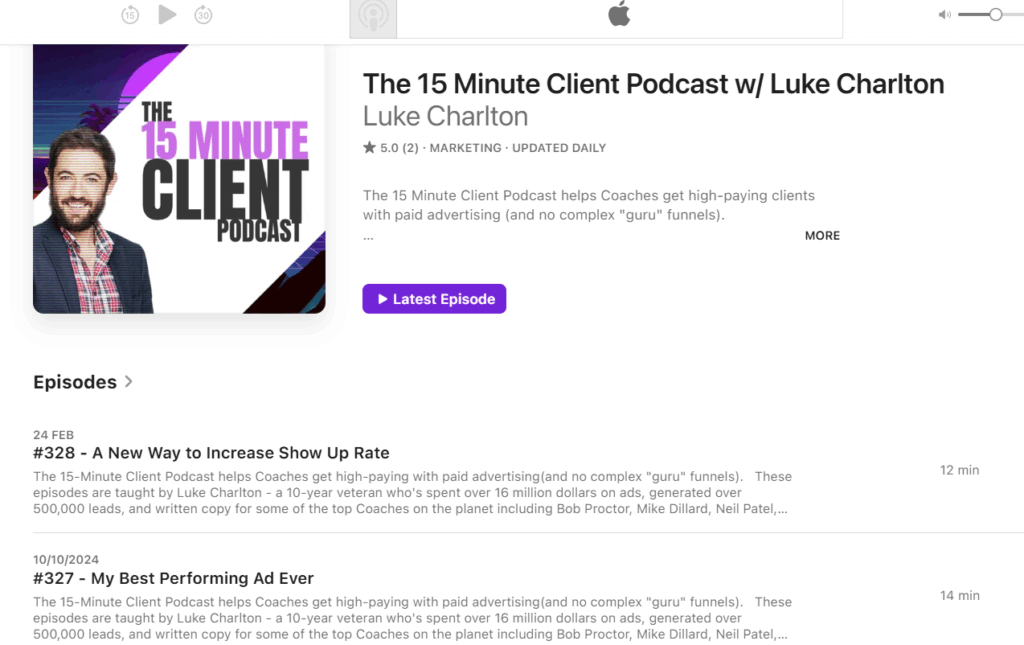
What’s important about podcasting for coaches is having something of value to say. Whether you want to share your personal story or explain the process you use to help your clients, we’re sure it’s worth listening to.
4. Launching a blog
Not a speaker? Starting a coaching blog is a great alternative to podcasting.
You may see others saying, “blogging is dead”. But you’re reading this, aren’t you? The fact that you’re here proves that generating traffic to your website by blogging still works!
Remember to optimize your website and blog for SEO to increase your traffic. End each post with a call to action to book a free discovery session with you!
5. Leveraging Pinterest
Whether you have a blog or a podcast, you can increase your traffic by adding Pinterest to your marketing strategy!
Pinterest is more of a search engine than a social media platform. You can create pins for every blog post and share other people’s pins when they’re relevant to your coaching niche.
This platform will allow you to generate traffic a bit faster than search engine optimization.
However, keep in mind that it still takes consistent effort to get the ball rolling on Pinterest. Your effort will compound over time as long as you’re consistent.
6. Starting an email newsletter
All of the above strategies can help you generate traffic to your website. But once people are on your website, not all of them will book a free discovery session with you right away.
In the meantime, you can add them to your email list instead.
Email marketing is a fantastic way to generate leads for coaches. You can:
- Add email forms and pop-ups on your website to capture email addresses in exchange for a lead magnet (this takes just a few minutes in Paperbell)
- Create an automated email flow to move new leads through your sales funnel
- Send an email newsletter every week or several times a week to nurture your leads and gain their trust
When subscribers are ready to buy, you’ll be top of mind for them, making you the obvious person to hire.
7. Collaborating with other coaches
Other online coaching businesses have audiences, big or small. And if you have an existing audience or something of value to share, you can collaborate with other coaches to tap into their audiences.
Here are some popular ways to exchange audiences with other coaches:
- Virtual summits: Several coaches, consultants, and/or experts come together to give various talks all around the same theme!
- Digital product bundles: Every participating coach provides one or more paid products to add to a bundle, which clients can purchase for one low price.
- List swaps: You email your list about a coach, and that coach emails their list about you!
These strategies work especially well with coaches who aren’t direct competitors with you but who serve the same audience.
Let’s say you’re a health coach specializing in helping people with menopause. Maybe a career coach who works with high-achieving women would share a similar audience.
But because you don’t help them with the same problems, you don’t cannibalize each other’s audiences.
Not sure where to find other coaches who share your audience? Try Coach Compare and create a profile for yourself if you haven’t already!
8. Starting paid ads
Want to reach your target audience faster than the other methods allow? If you have the budget, consider only using social media to run ads — like Facebook ads.
And if you want to avoid social media entirely, you can run ads on YouTube or Google as well.
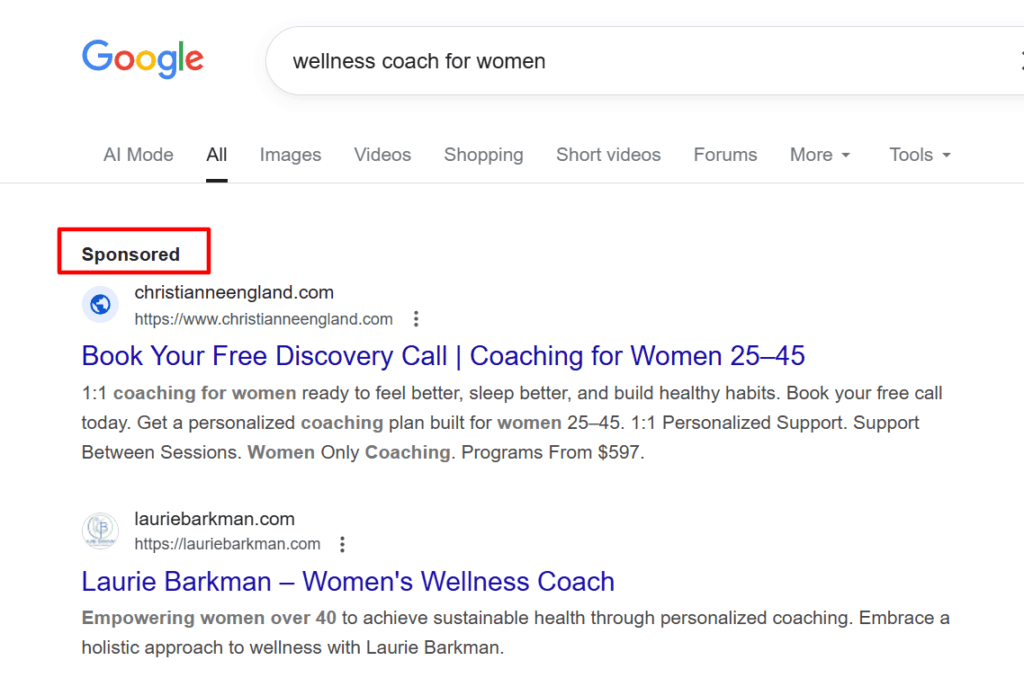
You can use ads to advertise your freebie or lead magnet.
While you can run ads directly to a calendar page to entice people to book a call, this is a relatively expensive strategy that requires lots of tweaking. In short, it’s not the best for beginning coaches trying to get paying clients.
You can also use ads to test content ideas. If you’re not sure what would resonate with your audience, try running a simple image with a headline to see if people engage and click.
Running ads will require you to hone your marketing skills, but those skills will carry over to organic methods as well.
9. Trying in-person networking
So far, we’ve covered effective online methods to attract clients fast. But you can find potential paying coaching clients offline, too.
Look up networking events in your area. They don’t have to be specifically branded as “networking events” — any event that allows you to meet people who fit your niche will work.
For example, if you’re a business coach, any type of event tailored to small business owners would work great.
You may not always land clients directly from such events. However, you can start asking people for referrals once you build a relationship with them.
They may even take you up on that offer themselves if they need it.
Plus, if you have an existing network, don’t forget to tap into it first. You may get your first coaching clients from this alone.
Grow Your Coaching Business Even if You Don’t Like Social Media
Social media is a powerful tool for coaches to attract coaching clients, but you can certainly thrive without it! As long as you’re able to reach people and start building relationships with them, you have what it takes to scale a coaching business without wasting time posting on social media.
Need help streamlining the admin side of your coaching business? With Paperbell, running a coaching business online has never been easier! Try it for yourself by claiming your free account.
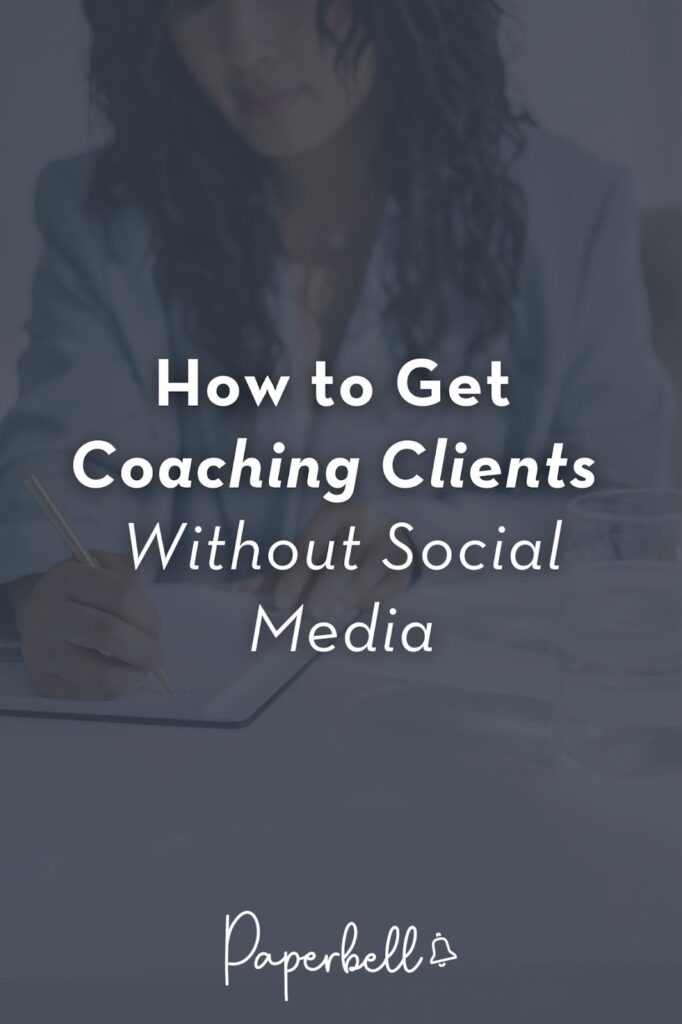
Editor’s Note: This post was originally published in March 2023 and has since been updated for accuracy.









